For my last bit of OCR testing I wanted to use a photo of some real printed tiles on a printed base. So I created a single state "card" with rectangular indentations for tiles.
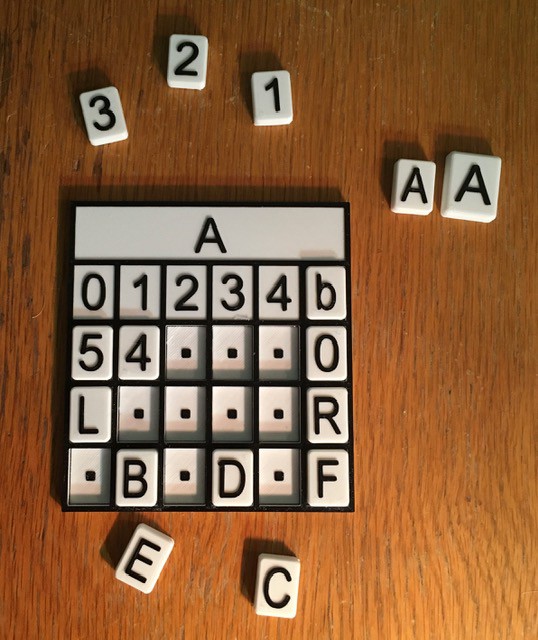
Since I will be combining six of these I wanted to scale things down as much as possible and still be useable. You can see the A tiles above for comparison, the larger being from TMD-1. The smaller tiles still feel pretty good and are easy to pick and place. Notice that the empty spots above have a square dot as a "place holder".
The Pi camera was not in yet so I just used my phone to take this shot.
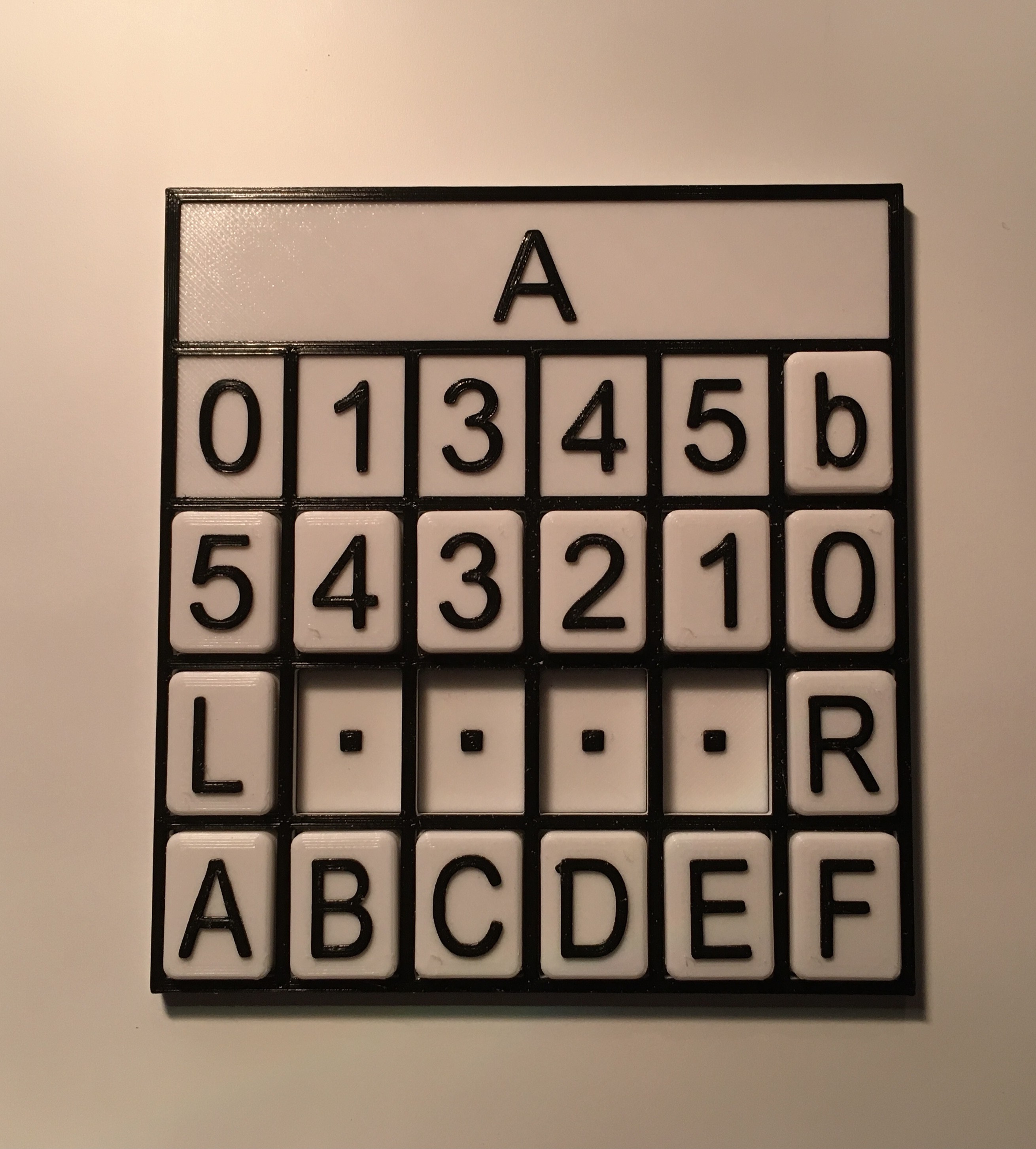
The process is almost as before. One change is that I now identify where the black borders are around and between the "cells" and use a "flood fill" algorithm with white to eliminate them. Here is the resulting binary image:
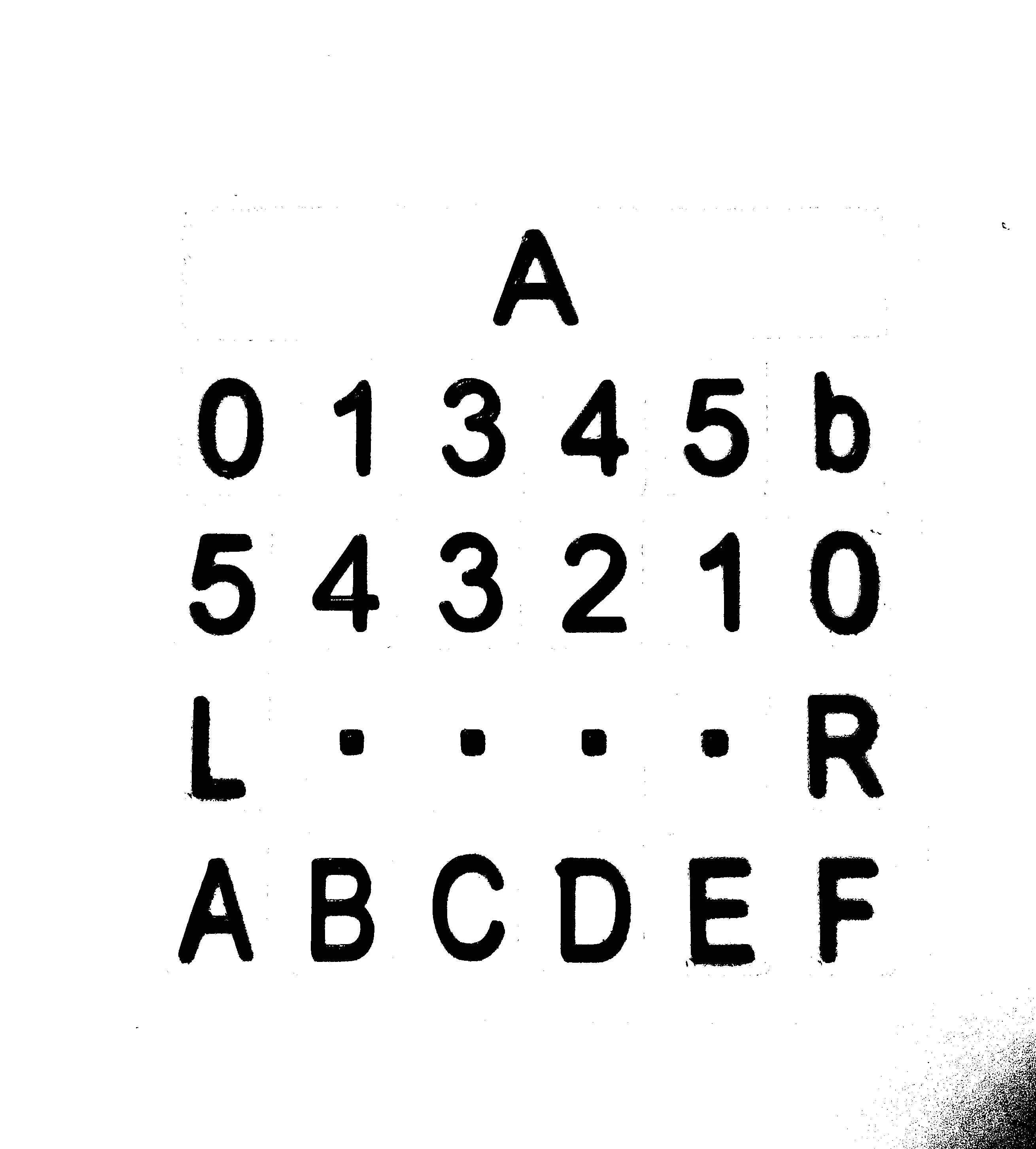
Use dilation to eliminate the noise:
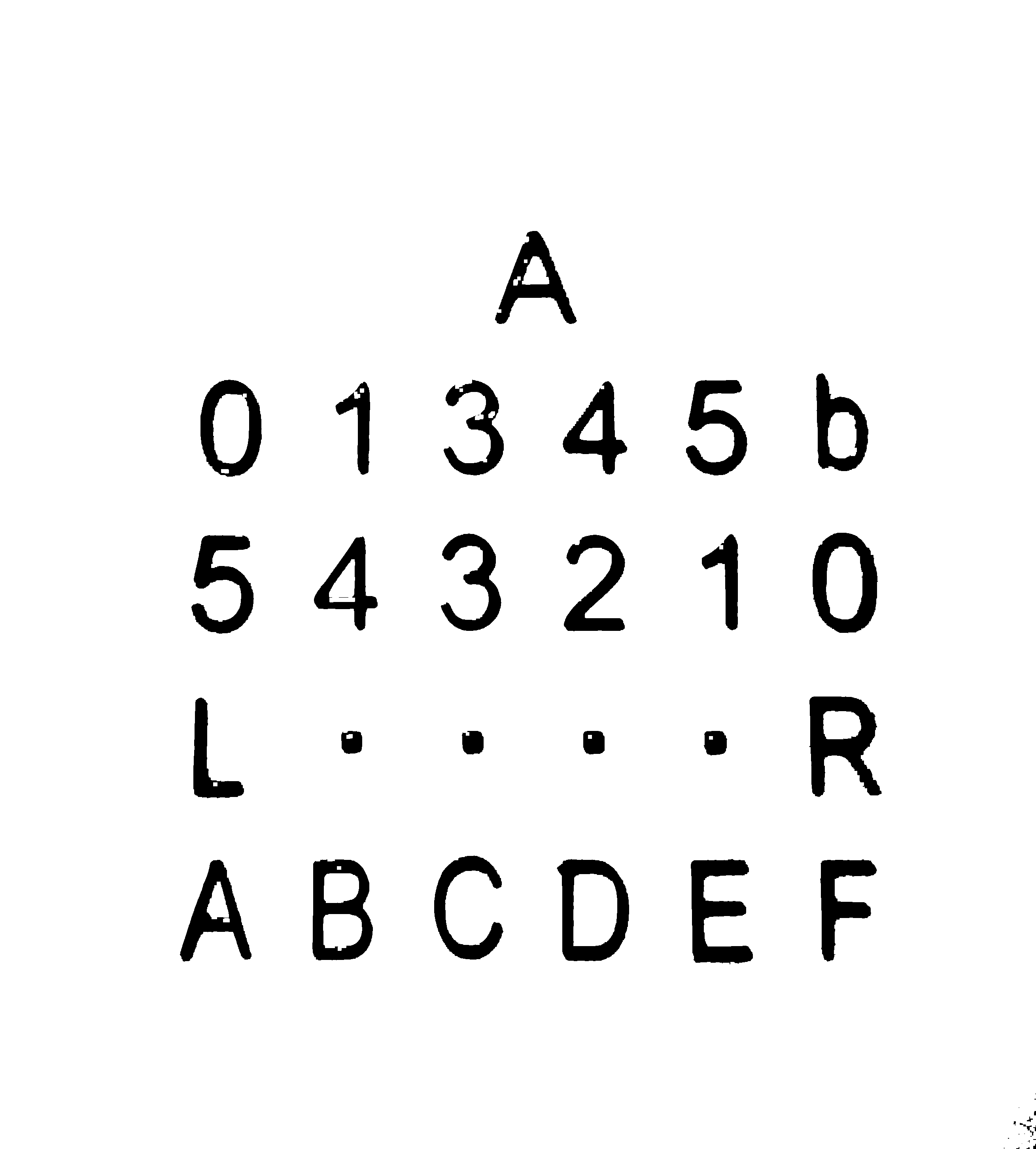
Edge detect the objects:
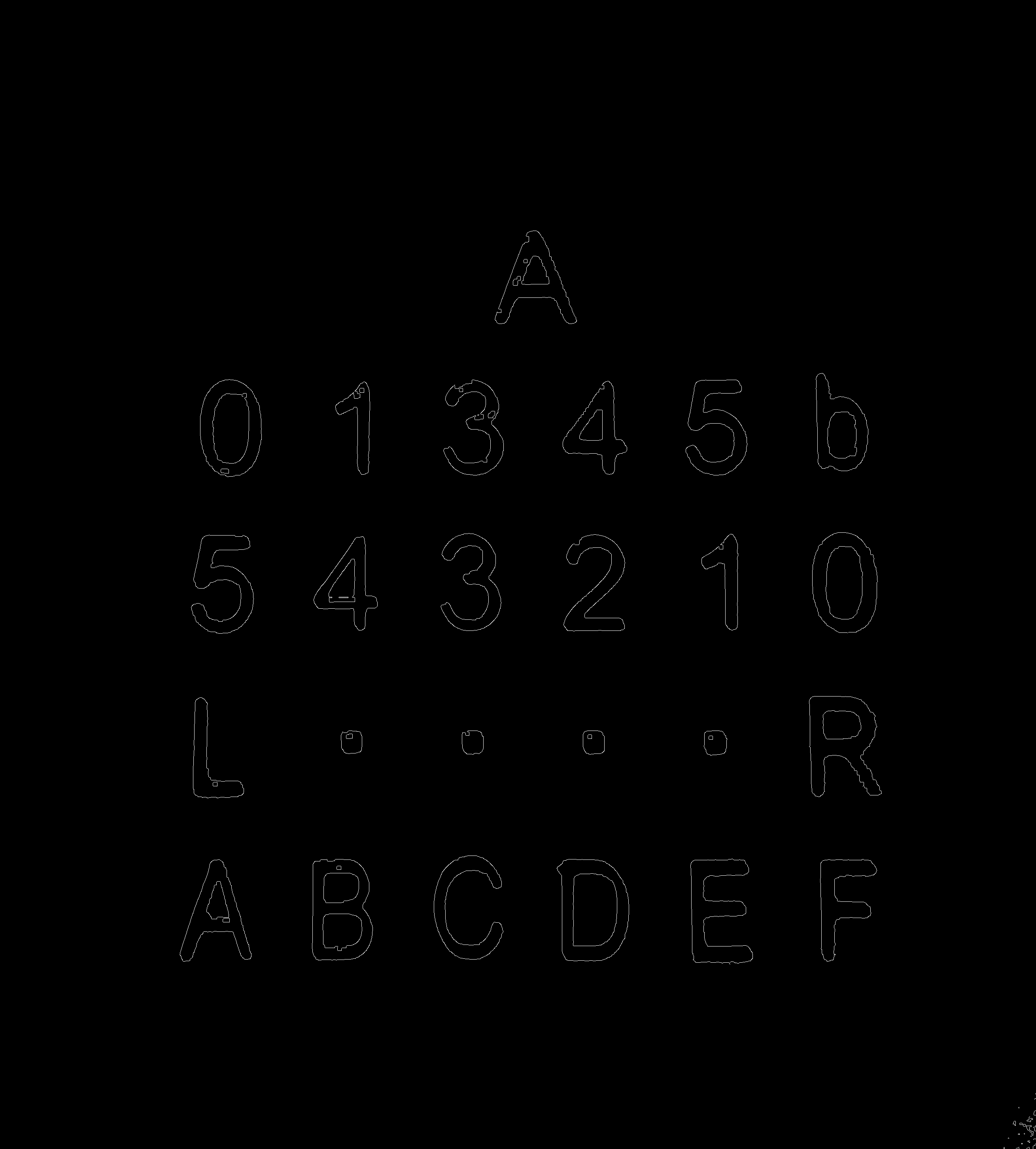
Then use contours to identify where the objects are:
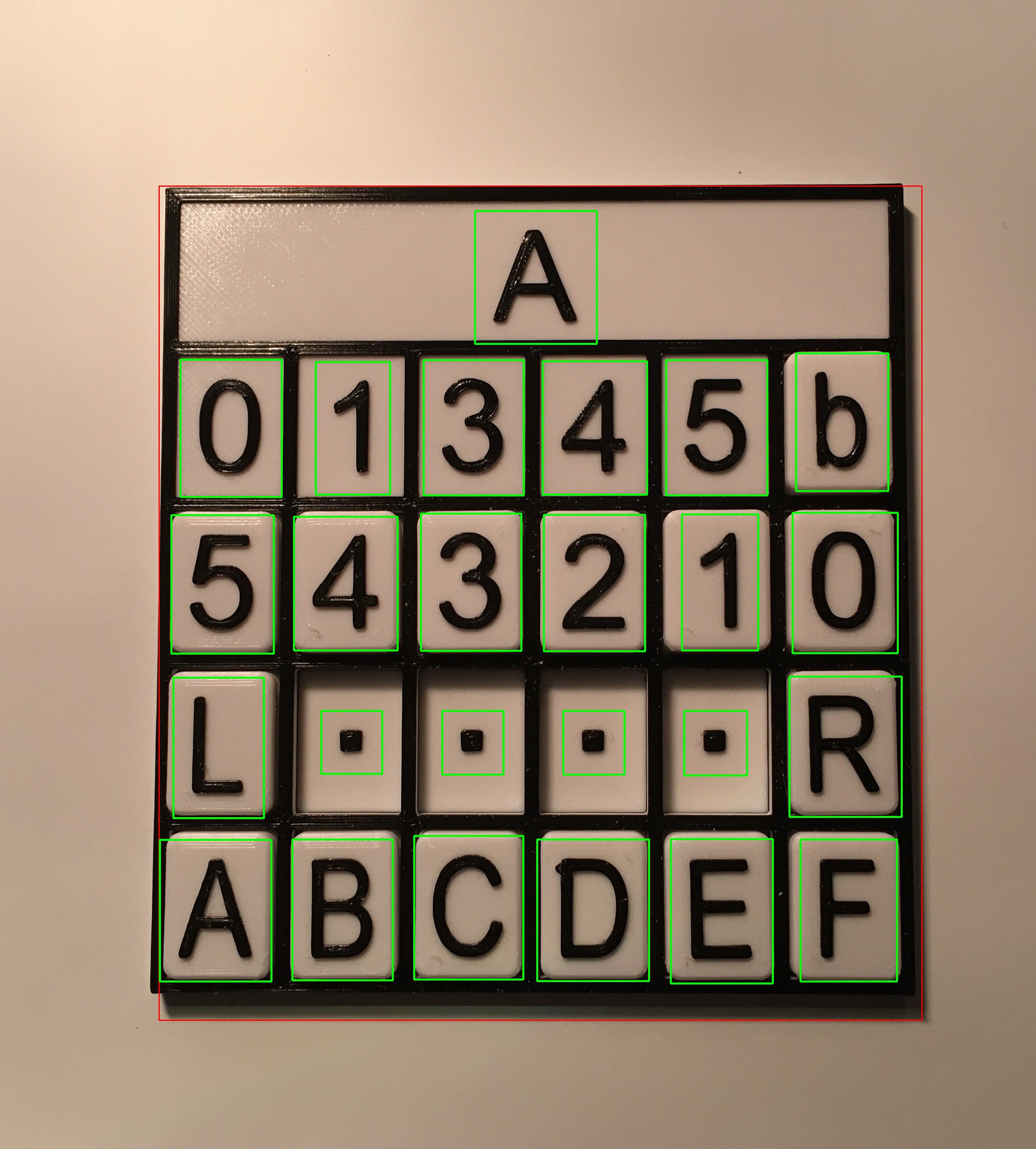
And the happy result after using Tesseract on each of the table cells:
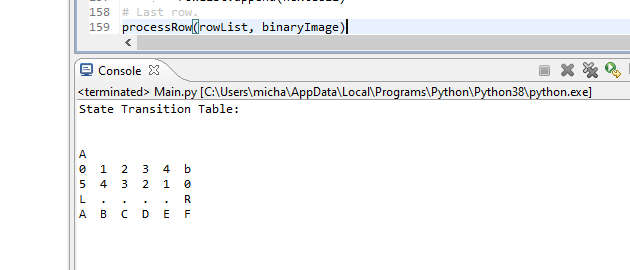 Since the size seems good I will print five more of these "cards" for states B, C, D, E, and F. I'll also make a legend down the side with each row's actions: Read, Write, Move, and Goto and combine them all on a base of some sort. I'll also have to figure out a way to mount the Pi camera above this base.
Since the size seems good I will print five more of these "cards" for states B, C, D, E, and F. I'll also make a legend down the side with each row's actions: Read, Write, Move, and Goto and combine them all on a base of some sort. I'll also have to figure out a way to mount the Pi camera above this base.  Michael Gardi
Michael Gardi
Discussions
Become a Hackaday.io Member
Create an account to leave a comment. Already have an account? Log In.